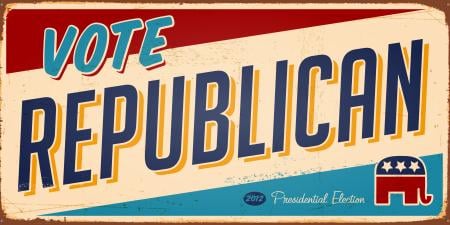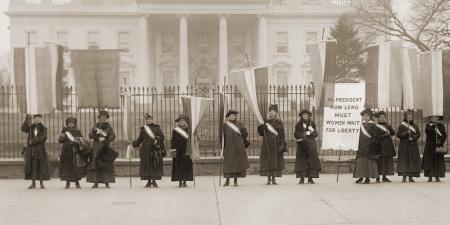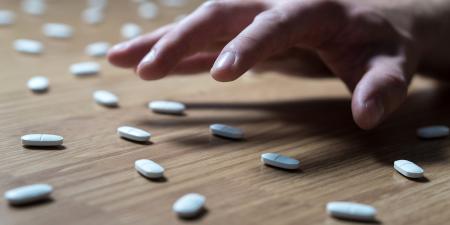To speak of activism is to recall the divisive Civil Rights and anti-Vietnam War demonstrations, when activism to many Americans meant tear gas, police barricades, and sit-ins. While many students took to the streets in defiance of social injustice, medical students mostly focused on their educations. Fitzhugh Mullan, a medical student activist of the time, was concerned about his fellow medical students' noninvolvement, their "noncitizenship" in the community. Mullan wrote that the degree of noninvolvement "in his own community characteristic of the American medical student today seems almost designed to breed social lethargy. The medical student is traditionally concerned primarily with his own academic accomplishment and the specific goals of his future. More than most students his educational style is that of privatism".1 Indeed, medical students have never been considered an activist constituency, but there have always been a few willing to test the boundaries of mainstream medical education. Students dissatisfied with conventional teaching or upset by the lack of attention to socially relevant health care issues have often been the catalysts for significant and necessary changes in public health.
While their student colleagues marched in the streets, many medical student activists of the late 1960s took to the ghettos. Concerned with an ever-present and growing gap between the economically affluent and the disadvantaged, medical students protested against the disparities in health care delivery between private hospitals that provided care to those who could pay and public institutions that mainly served the poor and indigent. Medical students related these concerns to the lack of education in the traditional medical curriculum on issues such as poverty, abortion, racism, and discrimination.2 To address these gaps and supplement standard medical school curriculum, a growing number of medical students set out to experience caring for the underserved so that they might be better equipped to fight the disparities in health care delivery.
At the time, very few medical students received community-based training, and an even smaller number experienced training in medically impoverished areas. Students at the University of Southern California, however, took it upon themselves to become immersed in these communities. They developed a program whereby medical students worked over their summer breaks in underserved areas in the Mississippi backcountry, the Bronx ghetto, and the rural migrant community of the California valley. Working alongside local high school student "interns," these medical students sought to understand and ultimately improve health care to the disadvantaged.3 Over the course of a few years, similar programs became available for medical students through the Student Health Organizations (SHO) and the Student American Medical Association (later to be renamed the American Medical Student Association—AMSA).4 The results of these programs were mixed; students gained valuable learning opportunities but often found their experiences frustrating and the relationships with their patients volatile and unsuccessful. One important lesson they did learn, however, is that the medicine taught in the classroom is drastically different from the practice of medicine in these communities.
Successive generations of medical student activists have benefited from subsequent community electives and externships. This inclusion of rural health electives and community clinic experiences in curricula has improved medical students' abilities to understand and treat social factors of disease. In fact, most medical students today will have some exposure to underserved populations during their medical school training. The difference between the experiences of past decades and those of today is that, previously, medical students had to organize and create these experiences themselves, often with little assistance from their school and always in addition to required courses.5 Today, medical schools offer full credit for these experiences, coordinating their programs to allow students to take electives in underserved or isolated communities. Whether or not they realize it, students who participate in these opportunities are experiencing what at one time would have been foreign material to most medical students.
Following the precedent of the Student Health Organizations, which dissolved in the mid-1970s, medical students increasingly became involved in numerous other medical organizations. Today's medical students demonstrate their activism through a wide variety of established organizations. Many of these deal specifically with political aspects of health care, the underserved and uninsured, and disparities in health care. Groups such as AMSA, the AMA's Medical Student Section (AMA-MSS), Physicians for Social Responsibility, Physicians for Human Rights, Medical Students for Choice, the Student National Medical Association, and others have strong and sustained student membership and activity. The activism of these organizations has often led to significant changes in medical education and improvements in public health.
In the late 1970s, medical student activists sought to reduce public exposure to secondhand smoke. After passing numerous internal resolutions aimed at tobacco policy, medical students of the AMA-MSS developed a campaign to eliminate smoking from domestic airline flights. The students took their idea to the AMA House of Delegates, where they succeeded in pressuring the AMA to adopt policy against smoking on airlines. As one of the first campaigns to address the health risks of secondhand public smoking, the efforts of the AMA-MSS eventually led to a smoking ban on domestic flights beginning in 1989—a significant early success in the growing movement to ban public smoking.6
Similarly, a recent campaign generated by activists within AMSA resulted in significant changes to resident physician working conditions. Despite decades of resistance by the medical community, medical students successfully initiated a public campaign to reduce excessive workloads, improve unsafe working conditions for medical residents, and reduce the number of medical errors caused by physician fatigue. After compiling significant evidence that excessive fatigue resulting from routine 100+ hour work weeks causes poor performance and patient care, AMSA launched a multi-year campaign to create regulations to limit resident work hours. Through a coalition of medical student, resident, and patient advocacy groups, AMSA petitioned the US Occupational Safety & Health Administration, helped introduce federal legislation, and sent tens of thousands of letters to Congress between 2001 and 2002. The Accreditation Council for Graduate Medical Education passed comprehensive work hour regulations in 2002 after decades of silence on the issue.7 Unsatisfied with being cheap labor for hospitals, medical students and residents successfully stood up for improved patient safety and common sense with regards to abuse of medical residents.
While most medical student activists seek to change medical curricula and affect public health within the context of current institutions, a number of socially conscious and aggressive medical students have turned to the larger and perhaps more frightening challenge of combating the global HIV/AIDS pandemic. Many students engaged in this struggle have continued the precedent of their forebears by traveling to underserved areas of the world to learn, teach, and treat. They have gone to AIDS-decimated regions of the world such as South Africa, Ghana, and Senegal. Domestically, medical students have actively confronted legislators and presidential candidates, hoping to use the tide of the 2004 election to force candidates to commit resources to the global fight against HIV/AIDS. These medical students publicized candidates' verbal commitments and brought about considerable change to many candidates' HIV/AIDS policies.
Though not as visible as activists from the politically charged 1960s, today's medical student activists have continued to challenge the standardization of traditional medical training and have worked to improve public health through their political and social efforts. As applicable to medical student activists today as it was in 1968, Arthur Douville wrote:
"Activism is resistance to models of behavior which include coldness and indifference to patients, inadequate or outdated scientific skills, and irresponsible principles of narrow self-interest in dealing with the legitimate demands of the community for a reasonable level of care. Activism is resistance to the exploitation of students on the pretext of education, from clinical clerkships to internships and residencies. Activism is the inquisitive search for scientific excellence, social responsibility, and the sensitivity and idealism which distinguish the physician from 'the doctors'."8
While there will always be those students absolutely absorbed in their academic development, the socially engaged future physician leaders will continue to create a path for the rest by extending the boundaries of traditional medical training.
References
- Mullan F. The new dynamic. Amer J Dis Child. 1968;116(5):505-508.
-
Mullan F. A new mood in medical students. Medical Opinion and Review. March 1968.
- McGarvey M, Mullan F, Sharfstein S. A study in medical action—the student health organizations. N Engl J Med. 1968;279(2):74-80.
-
The Student American Medical Association became independent from the American Medical Association in 1968. SAMA changed its name in 1975 to the American Medical Student Association.
- Fagel B. Medical student externship as an opportunity to expand the base of medical education: the viewpoint of the Student American Medical Association. JAMA. 1970;213(12):2059-2061.
-
Merchen TD, Champion HC. The AMA-MSS: leading the charge for change. JAMA. 1996;276:1438.
-
Agrawal J, Rising J. Resident education and patient safety. Am Fam Physician. 2002;66:1569-1575.
-
Douville A. The new physician as activist. The New Physician. 1968;17:209.



